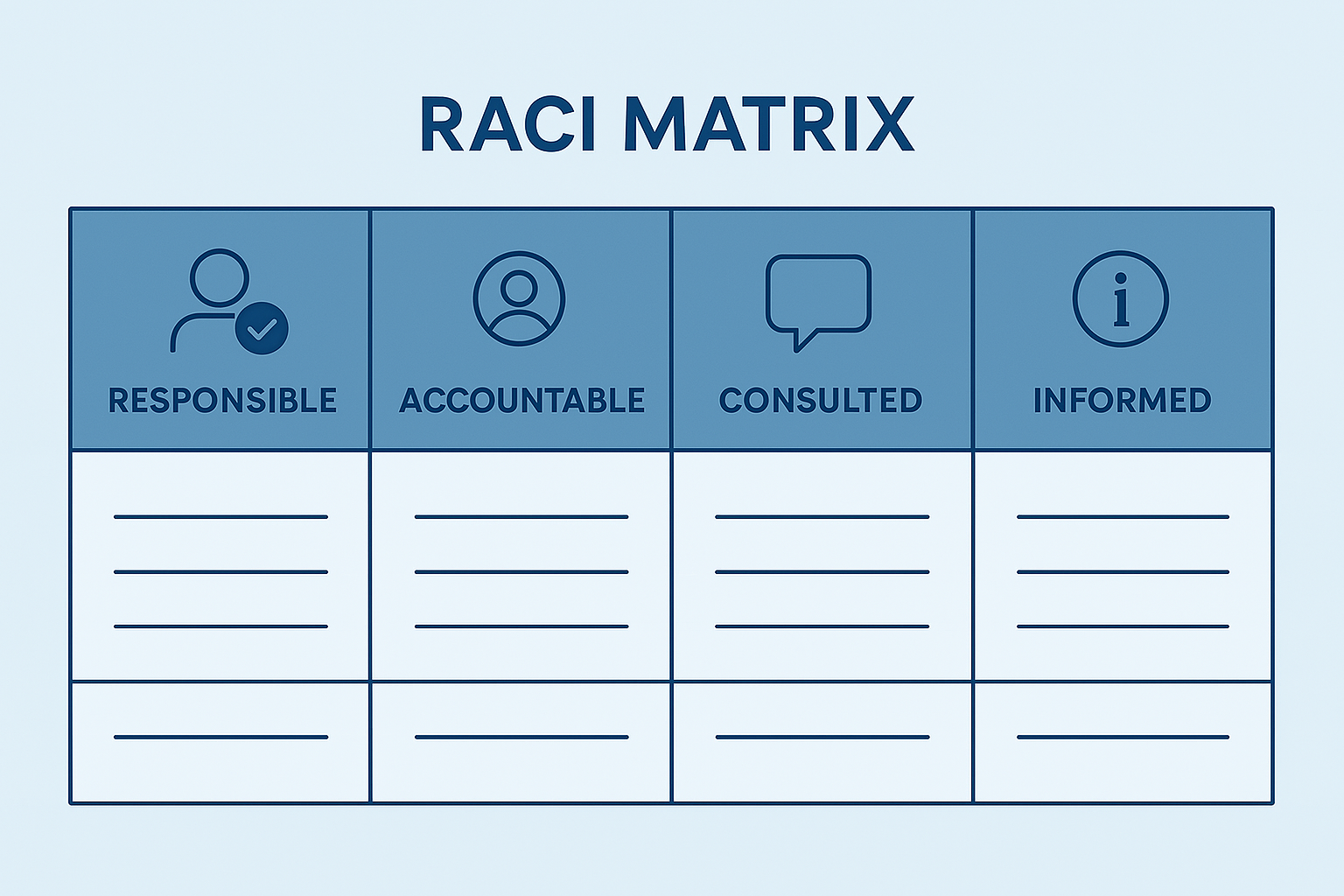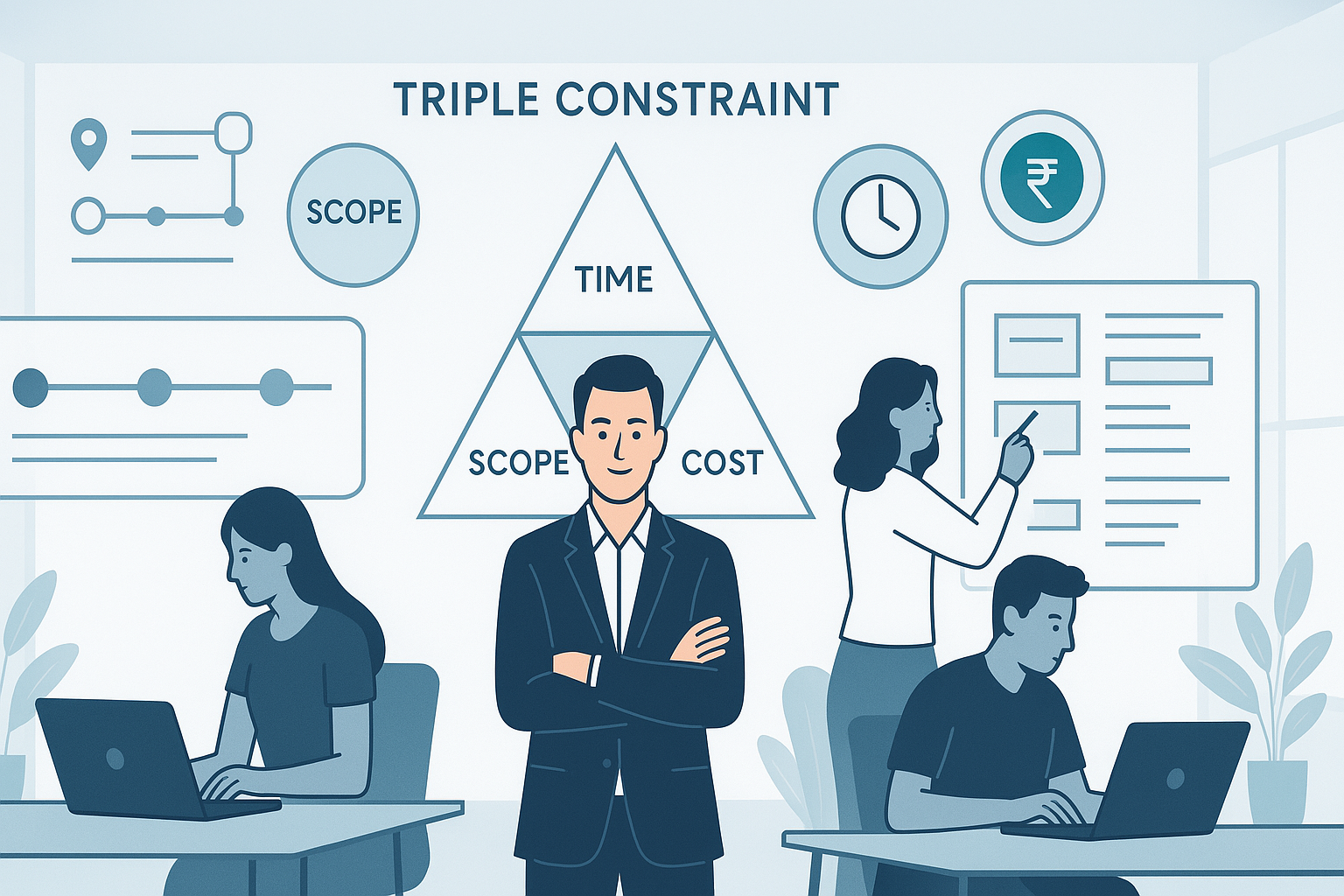If you’re stepping into project leadership—or planning to move into a more strategic role—you’ve likely asked yourself:
“What’s the real difference between a project, a program, and a portfolio?”
They sound similar. They all involve teams, goals, timelines, and delivery. But each plays a distinctly different role in how organizations deliver value.
In this post, we’ll break it down in simple, practical terms—so you can understand their purpose, scope, and structure, and how they fit together in the bigger picture of organizational strategy.
Why This Matters
Understanding these layers isn’t just textbook theory. It directly affects how you:
- Manage scope and complexity
- Communicate with stakeholders
- Align with business strategy
- Progress in your career (from PM to Program Manager to Portfolio Leader)
What Is a Project?
A project is a temporary endeavor undertaken to create a unique product, service, or result.
Key Characteristics:
- Has a defined start and end
- Delivers specific outputs or deliverables
- Limited by time, cost, and scope
- Managed by a Project Manager
Example:
Designing and launching a new company website.
It has a clear deadline, a fixed budget, and specific features to deliver.
What Is a Program?
A program is a group of related projects managed in a coordinated way to obtain benefits not available if managed individually.
Key Characteristics:
- Focuses on strategic outcomes
- May include interdependent projects
- Requires centralized governance
- Managed by a Program Manager
Example:
A company’s Digital Transformation Program could include:
- Website redesign (Project 1)
- New CRM implementation (Project 2)
- Customer mobile app (Project 3)
Each project serves a different purpose, but all contribute to the larger strategic goal of transforming customer experience.
What Is a Portfolio?
A portfolio is a collection of projects, programs, and operations managed together to achieve strategic objectives.
Key Characteristics:
- Focuses on organizational strategy and investment
- Projects/programs may or may not be related
- Prioritization is based on business value
- Managed by a Portfolio Manager or PMO
Example:
An organization’s IT Portfolio may include:
- Cybersecurity enhancement program
- Infrastructure upgrade project
- AI-based research initiatives
Each may serve different goals, but together they align with the company’s strategic tech vision.
Side-by-Side Comparison Table
| Element | Project | Program | Portfolio |
|---|---|---|---|
| Goal | Deliver specific output | Achieve strategic outcome | Align with business strategy |
| Scope | Defined and narrow | Broader with multiple projects | Varies; spans org-wide efforts |
| Timeframe | Temporary | Ongoing or long-term | Continuous |
| Manager | Project Manager | Program Manager | Portfolio Manager / PMO |
| Dependencies | Standalone or interdependent | Projects are interrelated | Projects/programs may be unrelated |
| Focus | Output | Outcome | Strategic alignment & value |
Real-World Analogy: Construction Company
Imagine a construction company.
- Project: Build a single apartment tower.
- Program: Urban housing development with multiple towers, community spaces, and utilities.
- Portfolio: All real estate investments across cities, including commercial and residential projects.
Each level adds more complexity, scope, and strategic oversight.
When to Use What?
| Scenario | You Should Use |
|---|---|
| You’re building something once, with a set goal and end date | Project |
| You have multiple, related projects with shared goals | Program |
| You need to balance multiple initiatives to maximize strategic value | Portfolio |
Common Misconceptions
- “A program is just a bigger project.” → No, it’s about interrelated goals, not size.
- “Portfolios are only for large corporations.” → Even startups have portfolios—they just don’t call them that.
- “Every project must be in a program.” → Not always. Many projects are standalone.
Conclusion: Aligning Action with Strategy
Understanding the difference between project, program, and portfolio isn’t just PM lingo—it’s the blueprint for growing from a task-focused manager to a strategy-driven leader.
Want to climb the ladder from managing tasks to shaping business impact? Start by mastering this hierarchy.
What’s Next?
In our upcoming blog, we’ll explore how to structure a PMO (Project Management Office) to manage projects, programs, and portfolios more effectively.
Subscribe or follow to stay ahead in your PM journey!



